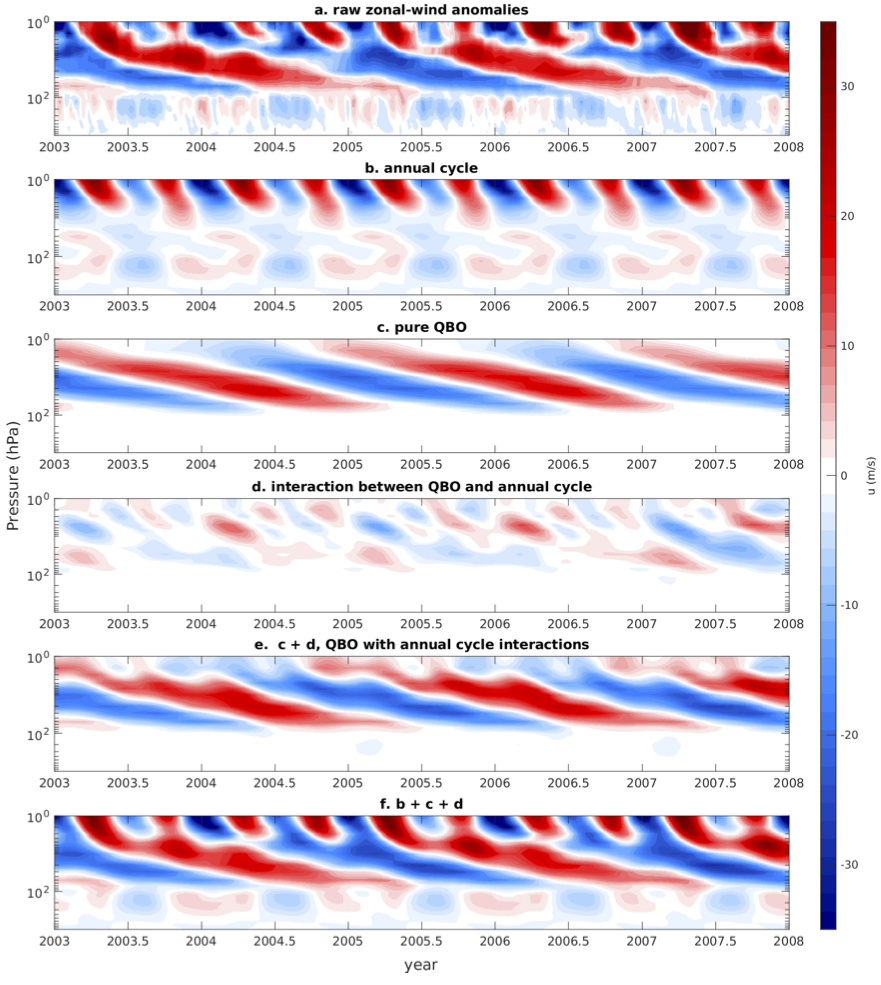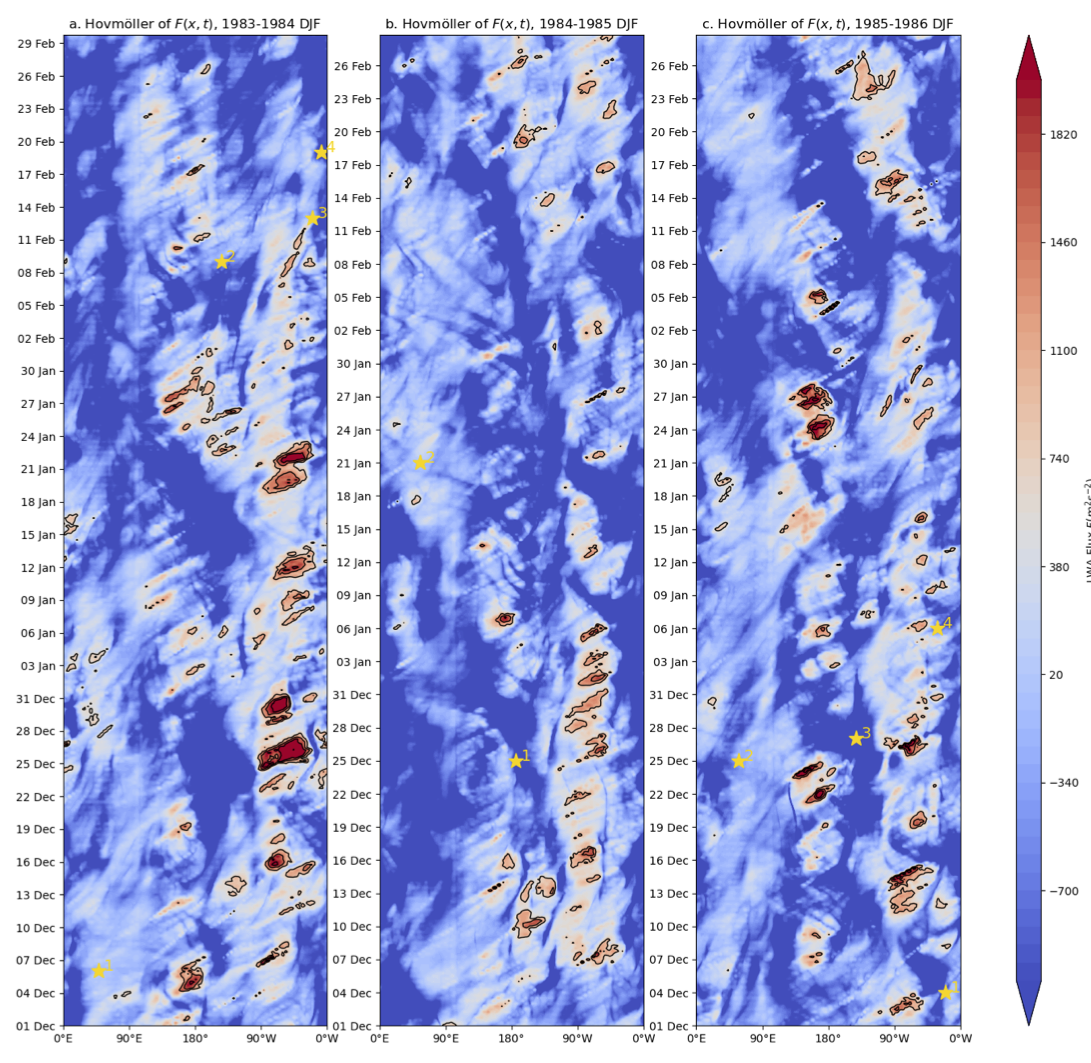The Psychics of Physics
Published:
A fun article on NYU’s new Greene supercomputer and how it allows us to explore climate change came out in NYU IT’s Download Newsletter.

Professor at the Courant Institute
less than 1 minute read
Published:
A fun article on NYU’s new Greene supercomputer and how it allows us to explore climate change came out in NYU IT’s Download Newsletter.
1 minute read
Published:
Ofer Shamir just published our work Earth’s Infrared Background on the arXiv!

1 minute read
Published:
Aaron Match submitted our work exploring a curious feature of extratropical ozone in simulations of global warming.

less than 1 minute read
Published:
Claire Valva submitted a paper drawing on techniques from dynamical systems analysis to better define and understand the Quasi-Biennial Oscillation. Koopman methods are built for identifying nearly periodic behavior in chaotic systems. We applied it to zonal winds in the tropical stratosphere to objectively identify the Quasi-Biennial Oscillation.

1 minute read
Published:
Xingjian (Ken) Yan, a precocious undergraduate (now bound for a PhD at MIT) working with Lei Wang and I just submitted a paper exploring the utility of the traffic jam theory of blocking onset for perdiction to Geophysical Research Letters. Ken defined and explored “flux exceedance events”, meteorological situations where the jet stream gets overloaded with storm activity. Nakamura and Huang suggested that this overloaded jet situation creates a pile up storm activity – a traffic jam – leading to blocking events. Ken found that the climatological structure of exceedance events is remarkably similar to that of blocks, but that they appear to be distinct phenomenon: an overloaded jet stream is unfortunately not a reliable harbinger of an atmospheric block.
